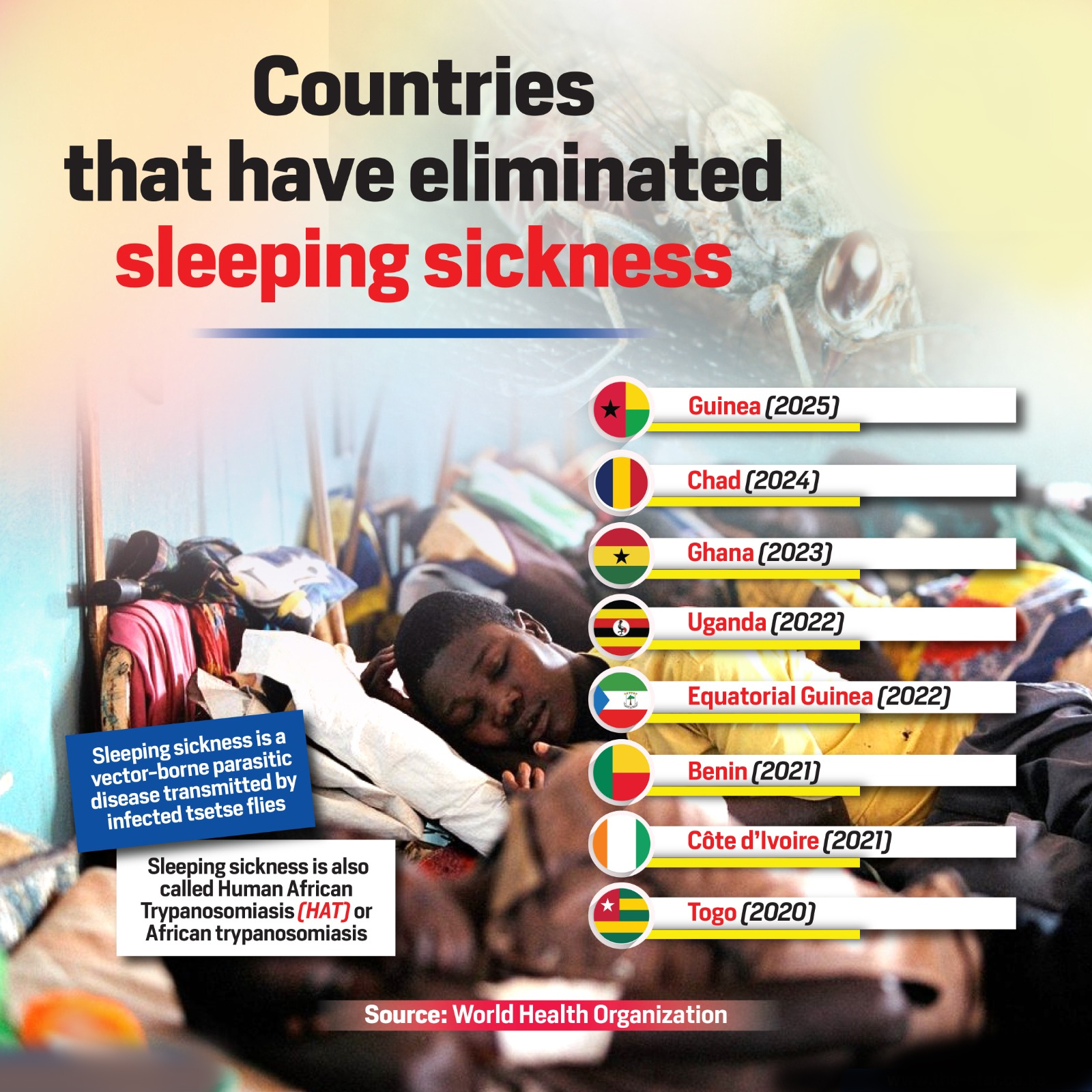Context:
Recently, the World Health Organization (WHO) officially certified Kenya as having eliminated human African trypanosomiasis (HAT), commonly known as sleeping sickness, as a public health problem. This marks a significant victory in the global fight against neglected tropical diseases (NTDs).
Background:
- With this declaration, Kenya becomes the 10th country globally and one of several African nations to eliminate sleeping sickness as a public health problem. Other countries include Togo, Côte d'Ivoire, and Uganda.
- Previously, in 2018, Kenya certified free of Guinea worm disease. The WHO’s 2030 NTD Roadmap aims to eliminate at least one NTD in 100 countries by 2030.
About Sleeping Sickness:
Sleeping sickness, or human African trypanosomiasis, is a parasitic disease caused by protozoa of the genus Trypanosoma. It is transmitted to humans through the bite of infected tsetse flies, which are endemic to sub-Saharan Africa.
Symptoms and Impact:
- Early stage: Fever, headaches, joint pains, and itching.
- Late stage: Neurological symptoms including confusion, altered sleep cycles, and behavioral changes.
- Without treatment, the disease is almost always fatal.
There are two forms of the disease:
1. Trypanosoma brucei gambiense (West and Central Africa – chronic form)
2. Trypanosoma brucei rhodesiense (East and Southern Africa – acute form)
About Neglected Tropical Diseases:
Neglected Tropical Diseases (NTDs) are a group of 21 infectious diseases identified by the WHO. They mainly affect impoverished populations in tropical and subtropical regions with poor access to sanitation and healthcare. Caused by a variety of pathogens—viruses, bacteria, parasites, fungi, and toxins—NTDs lead to chronic suffering, disability, and even death, reinforcing poverty cycles.
- Common NTDs:
- Some of the most widespread NTDs include Chagas disease, dengue, leprosy, lymphatic filariasis, onchocerciasis, rabies, schistosomiasis, soil-transmitted helminthiases, trachoma, and yaws.
- These diseases thrive in conditions of inadequate hygiene and limited healthcare access, disproportionately affecting marginalized communities.
- Some of the most widespread NTDs include Chagas disease, dengue, leprosy, lymphatic filariasis, onchocerciasis, rabies, schistosomiasis, soil-transmitted helminthiases, trachoma, and yaws.
Control and Elimination Strategies:
NTD control is among the most cost-effective global health interventions. Measures include mass drug administration, improved sanitation, vector control, and health education. The WHO aims to eliminate at least one NTD in 100 countries by 2030, with 56 countries achieving this as of May 2025.
Challenges Ahead:
Key obstacles include funding cuts, particularly in Official Development Assistance (ODA), and the complex transmission cycles of many NTDs. Poverty, poor infrastructure, and environmental factors further hinder eradication efforts, making multi-sectoral and sustained action essential.
Conclusion:
Kenya’s elimination of sleeping sickness is a public health milestone that demonstrates the power of sustained effort, community engagement, and global cooperation. It reinforces the idea that neglected tropical diseases, long considered endemic in many parts of Africa, can be eliminated with the right strategies.







